दिल्ली
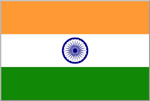
Indian capital and largest city

The sprawling, seething metropolis of Delhi is the largest urban area in India, and with a population of over 28 million is the second largest conurbation in the world after Tokyo. Delhi and New Delhi are all one contiguous city, with New Delhi being the southern area laid out by the British as a purpose-built capital founded in 1931, and where the seat of Indian government still is today. It’s a frantic, crowded cacophony, the cliché being “an assault on the senses”, and they’re not wrong. There is, however, much of historical and cultural interest, it was great fun exploring around by tuk-tuk, and everything we ate was delicious.
Delhi was the natural place to start our trip to India, staying a couple of nights before completing the Golden Triangle with Agra and Jaipur, then back to Delhi for one more night to collect our delayed luggage, before heading down to Mumbai. Coming in to land at Delhi from Amsterdam there appeared to be evening fog outside, but I quickly realised it was the fearsome Delhi smog that was obscuring my view. It was clean and comfortable on the plane, and I wasn’t sure I wanted to get off.
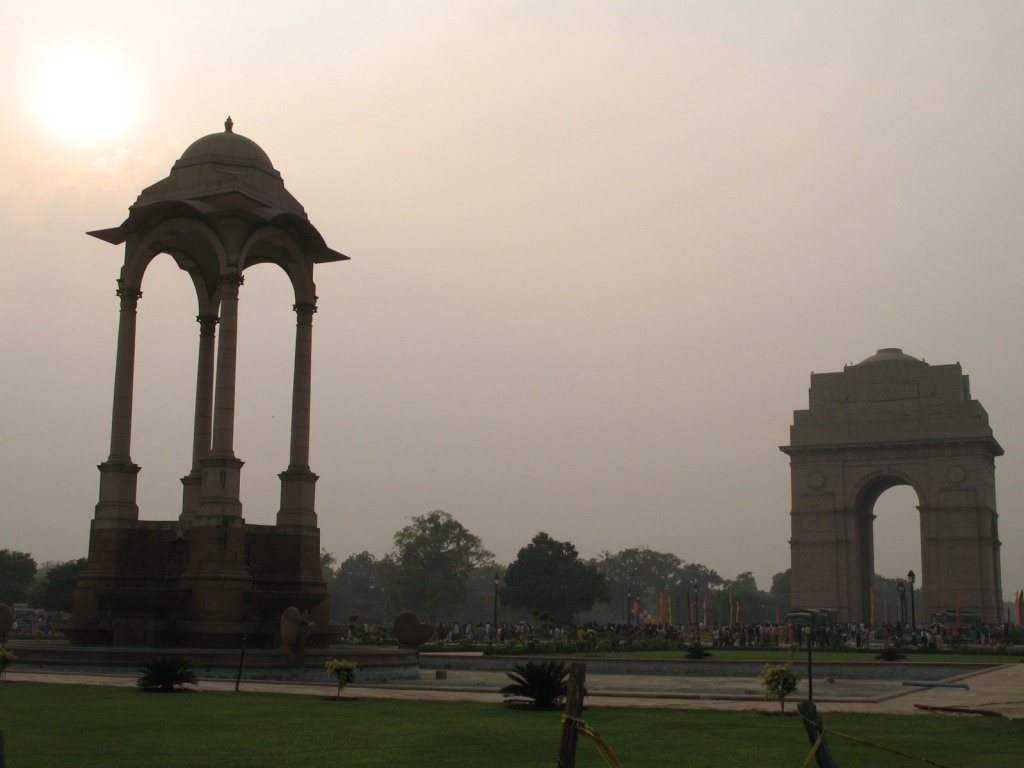
Centrepiece of New Delhi, India Gate is a war memorial arch, and confusingly similar in name to Mumbai‘s Gateway of India. The canopy on the left used to host a statue of King George V, installed in 1936 and an immediate focus of ire from the independence movement. Following occasional vandalism and independence itself in 1947, it was finally removed in 1968, and a new statue of Indian nationalist Subhas Chandra Bose was installed in 2022. I figured this was a nice picture to open with, but not the first place we visited.
Our first stop was in fact Main Bazar, where our lodgings were located as carefully chosen by my travelling companions, being the first listing in the Lonely Planet. It was a grotty hole up a fusty alley, the perfect way to desensitise ourselves. The density of signage and advertising is paralleled beyond India only by that of Kathmandu.

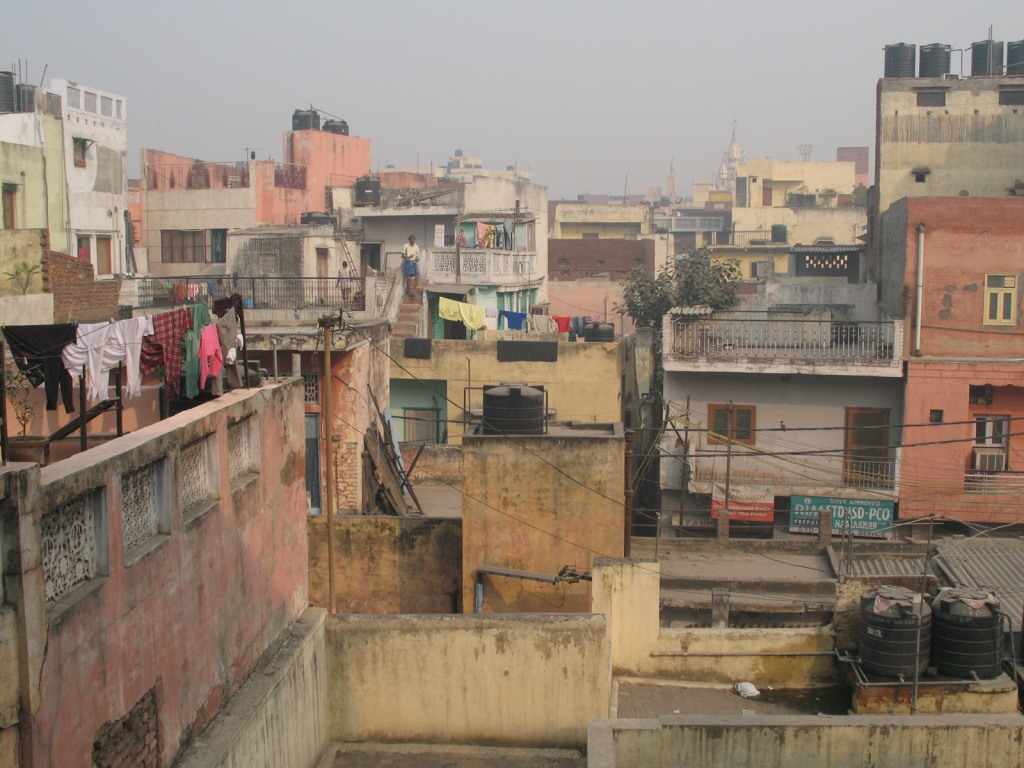
View from the back of our accommodation and the density of main Bazar, conveniently located near New Delhi Railway station. From the front I could lean out the windows and touch the buildings across the street, all the easier as there was no glass in the frames, and the cockroaches would scuttle and hide when we entered the room at night and switched on the light. I’m not sure we got our two dollars’ worth.
Main Bazar Road with all variety of traffic passing through. It was convenient to be lodged just off a market street, as with our missing luggage the first thing we had to do was buy some new underwear from the stalls.
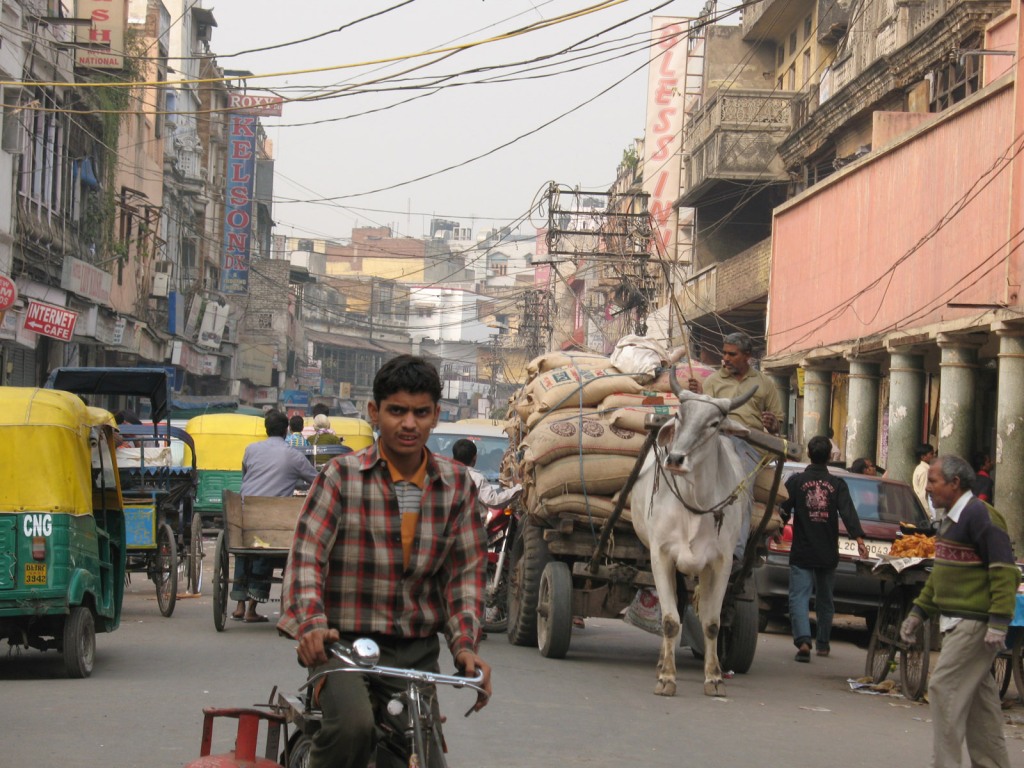
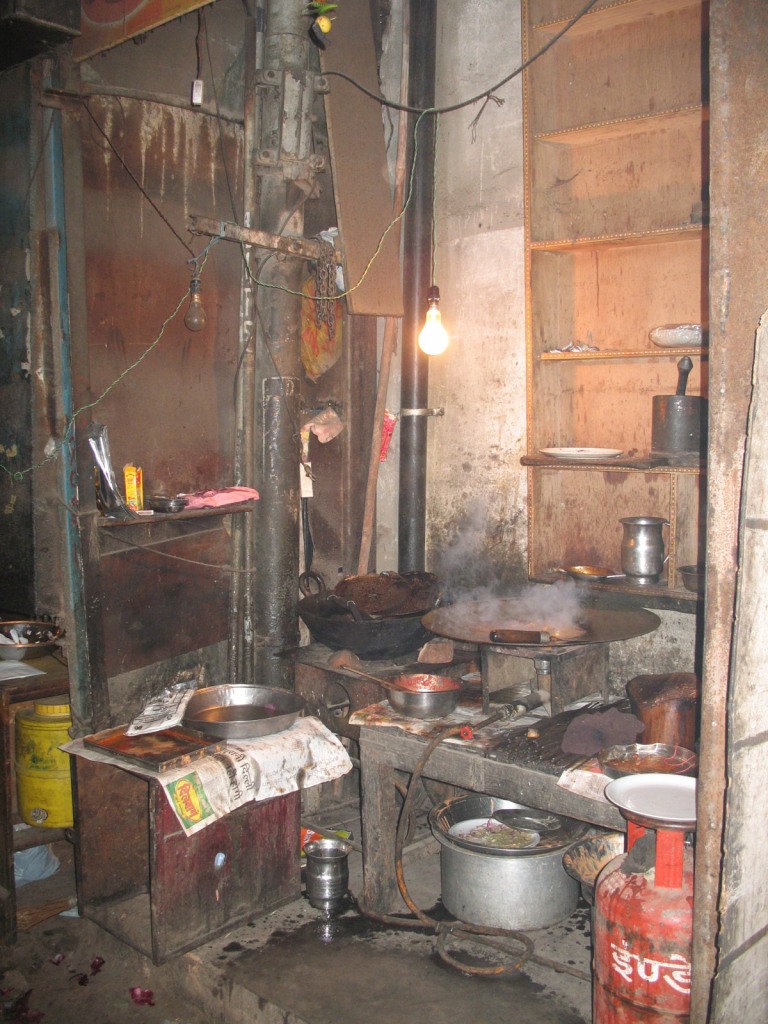
Local back alley kitchen, all the extra grime is what gives the food the extra flavour! We didn’t eat from here, but everything we had from other more salubrious-looking street vendors nearby was tremendously tasty.
The rumours are true, the cows wander the streets like they own the place. All varieties too, although some looked quite lumpy in strange places.

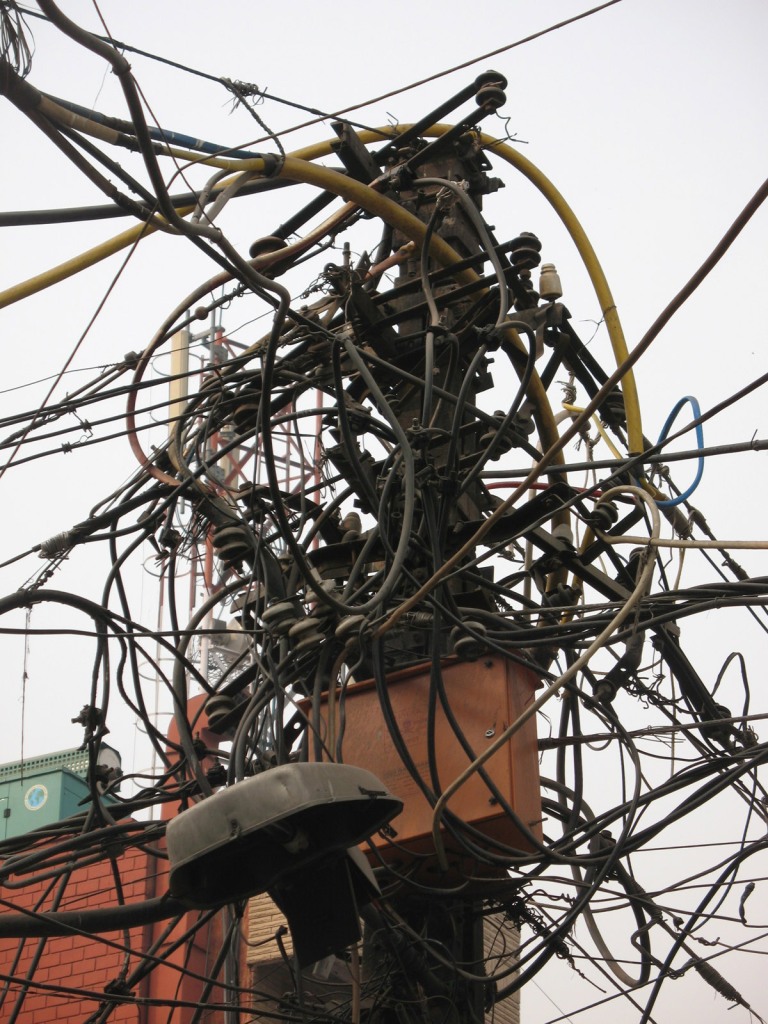
Indian electricians are masters of the birds-nest wiring technique, easy enough to hook something up if there are no rules, but I’m not sure how they diagnose faults or make repairs. Maybe just abandon the old cables, and string up some more.
On to a less chaotic area, at India Gate in the centre of New Delhi. Presumably a take on the Arc de Triomphe, which is itself a take on Roman triumphal arches, the large inscription at the top simply says “India”, just in case you weren’t sure where you are. It is a war memorial arch which honours the dead of the First World War and various contemporary conflicts, and was completed in 1931.
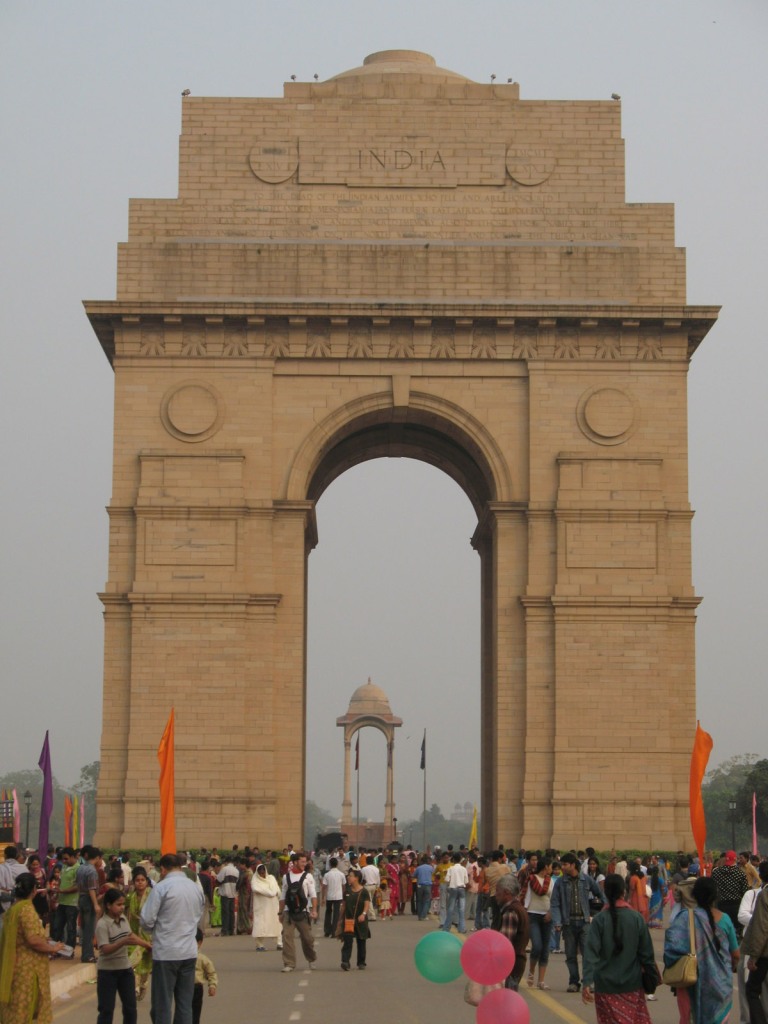
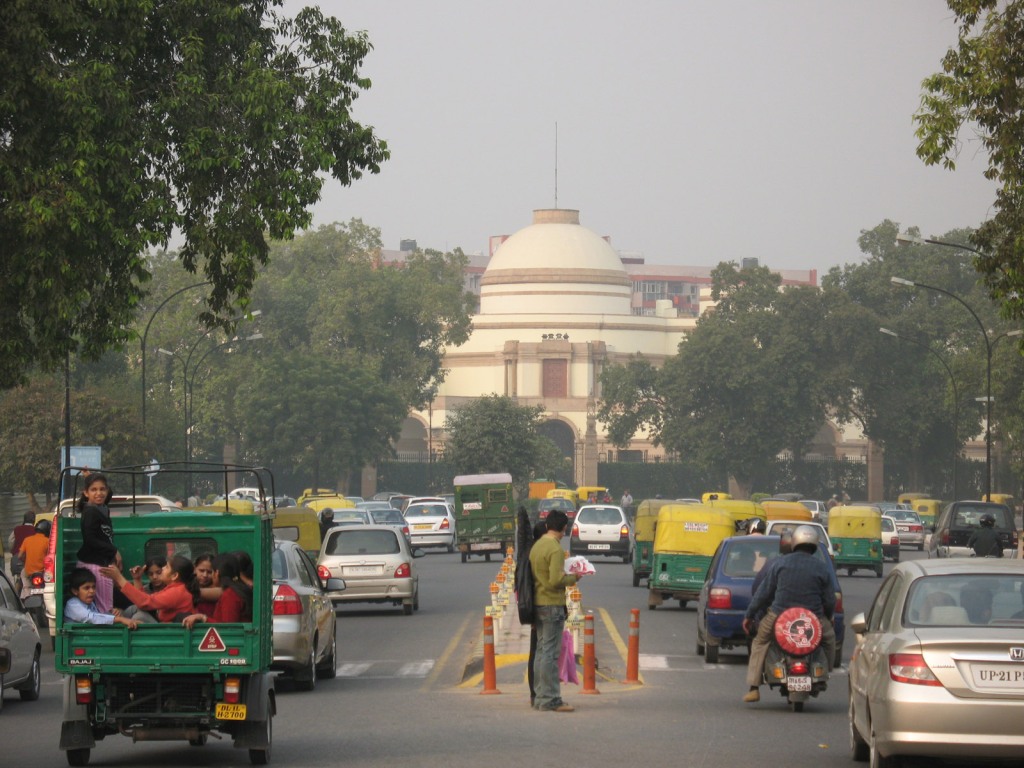
Hyderabad House, as seen down Copernicus Marg, is the state guest house of India – if you’re a visiting president or premier, these will be your lodgings.
Looking straight down Kartavya Path, an altogether grander abode looms on the horizon: Rashtrapati Bhavan is the official residence of the President of India, the great domed structure in the distance. Originally built as the Viceroy’s House and opened in 1931, it was the obvious place for independent India’s leader to move in, once they’d kicked the British out. The president serves a five-year term, and at the time of our visit the incumbent was Pratibha Devisingh Patil, the first female president of India.
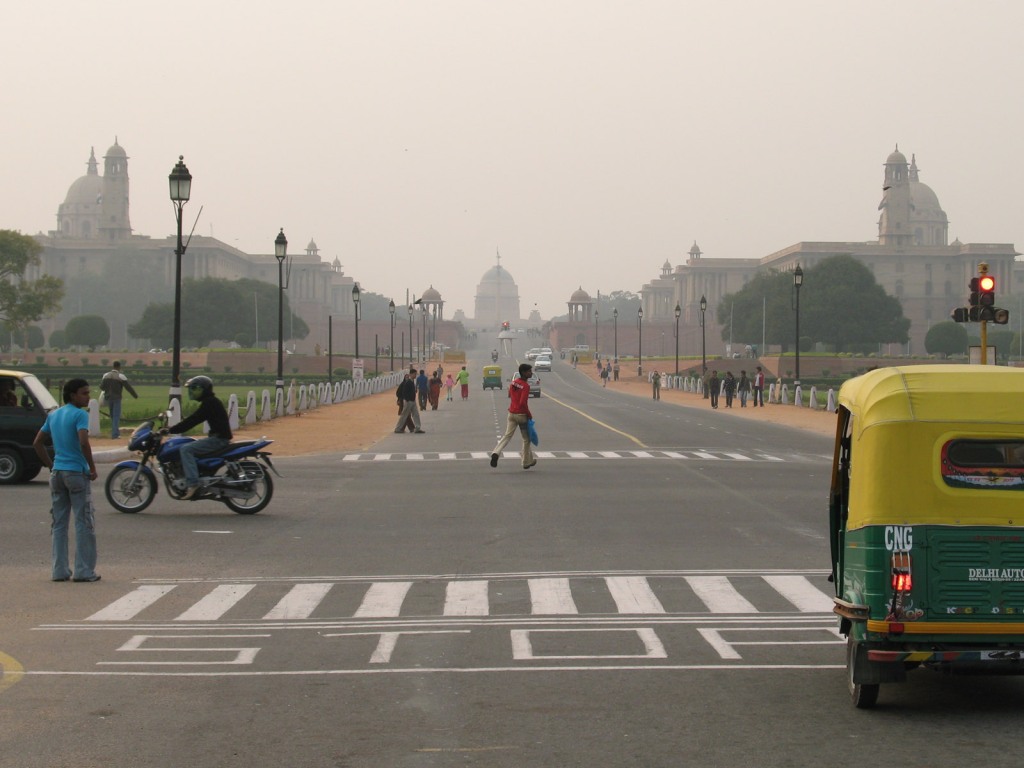
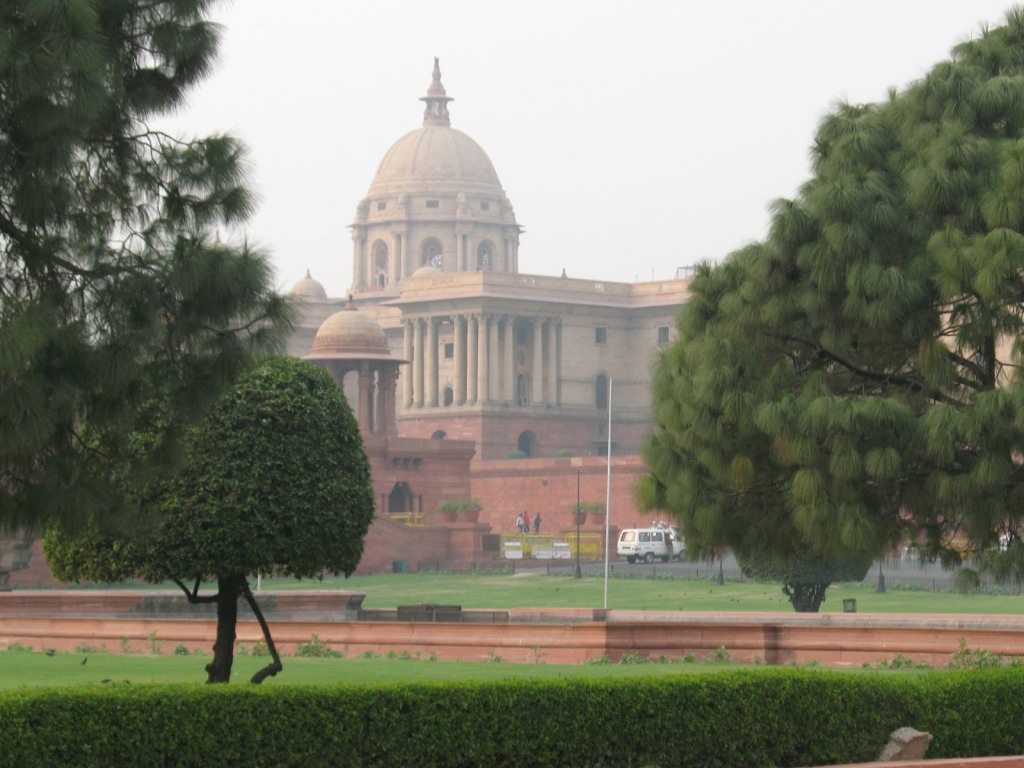
Rashtrapati Bhavan is flanked by two similarly grand ministries, this one is the Ministry of Home Affairs. Next time I will have to book a proper tour to see these grand buildings up close, as our tuk-tuk driver was too scared to stop here.
Connaught Place is the central business district of New Delhi, laid out in concentric rings surrounding an open green space. It was the closest thing to a public park that we found, although we still had to go through metal detectors to get inside. In the background is The Statesman Building.
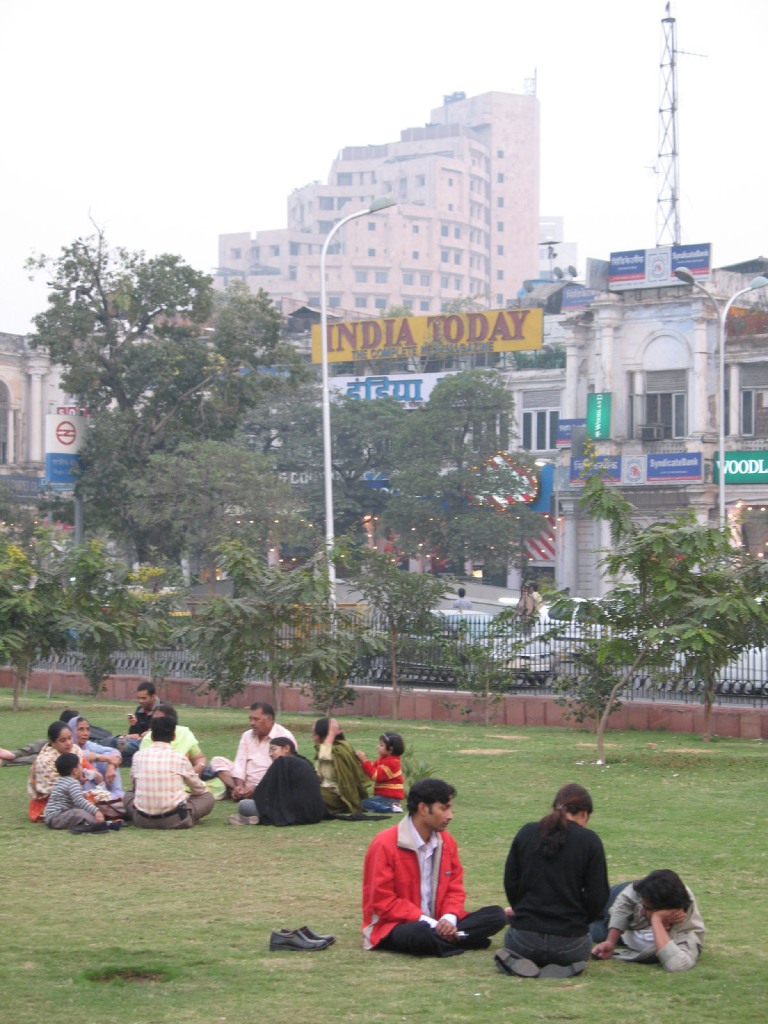
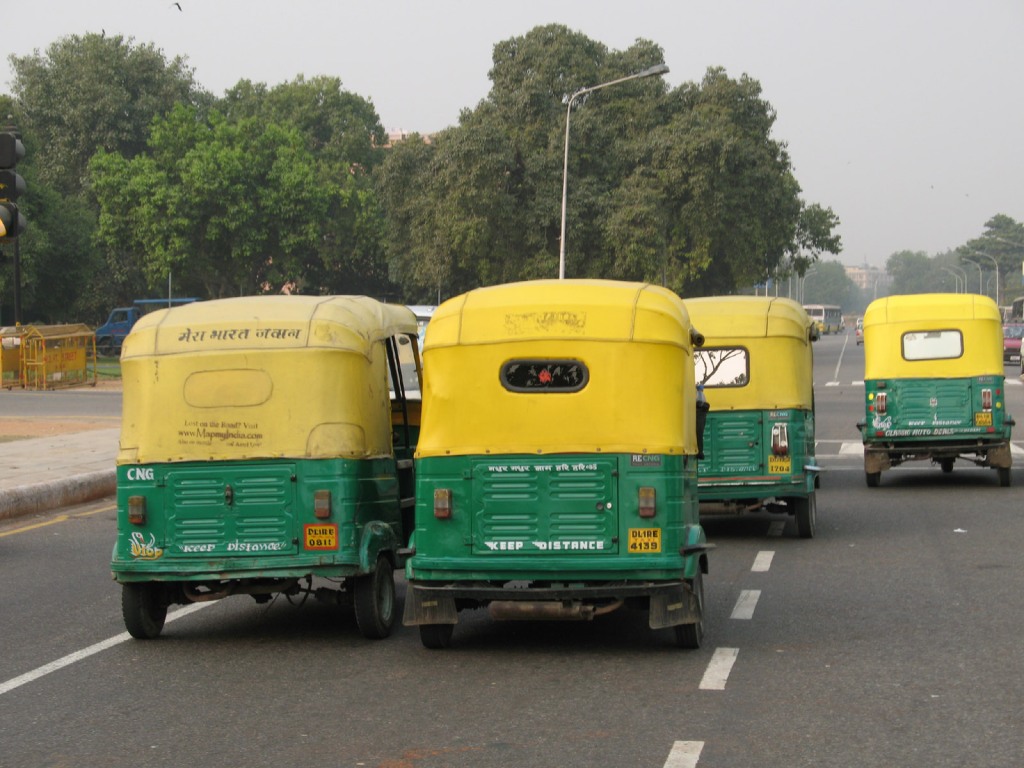
Our transport of choice, tuk-tuks are as ubiquitous in Delhi as they are in Bangkok, but considerably less salubrious. Most are produced in Pune, near Mumbai, by local manufacturer Bajaj Auto, with the green and yellow colouring indicating that they’re fuelled by compressed natural gas (CNG). We rented a Sikh driver for the day to bounce around the capital.
Jama Masjid, the main mosque in old Delhi, dates from 1656 and takes its style from the Jama Masjids of Agra and Fatehpur Sikri. We were able to enter, but only after covering our offensive knees with towels. Although the predominant religion of India is Hindu, followers of Islam constitute a sizeable minority in the country.
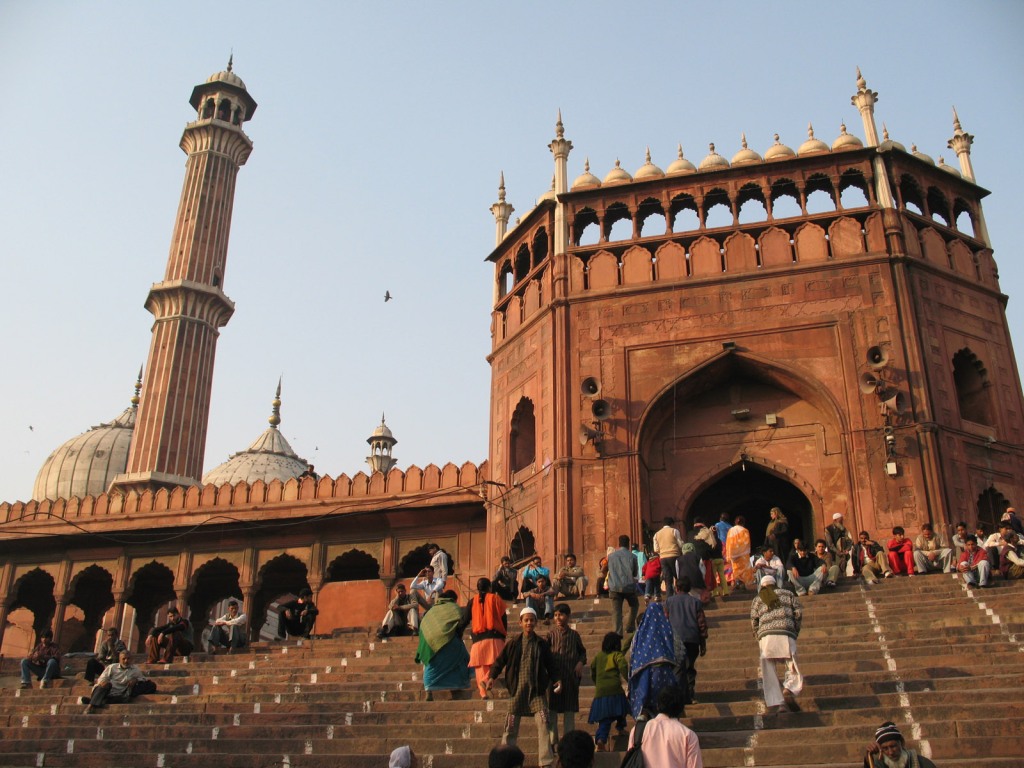
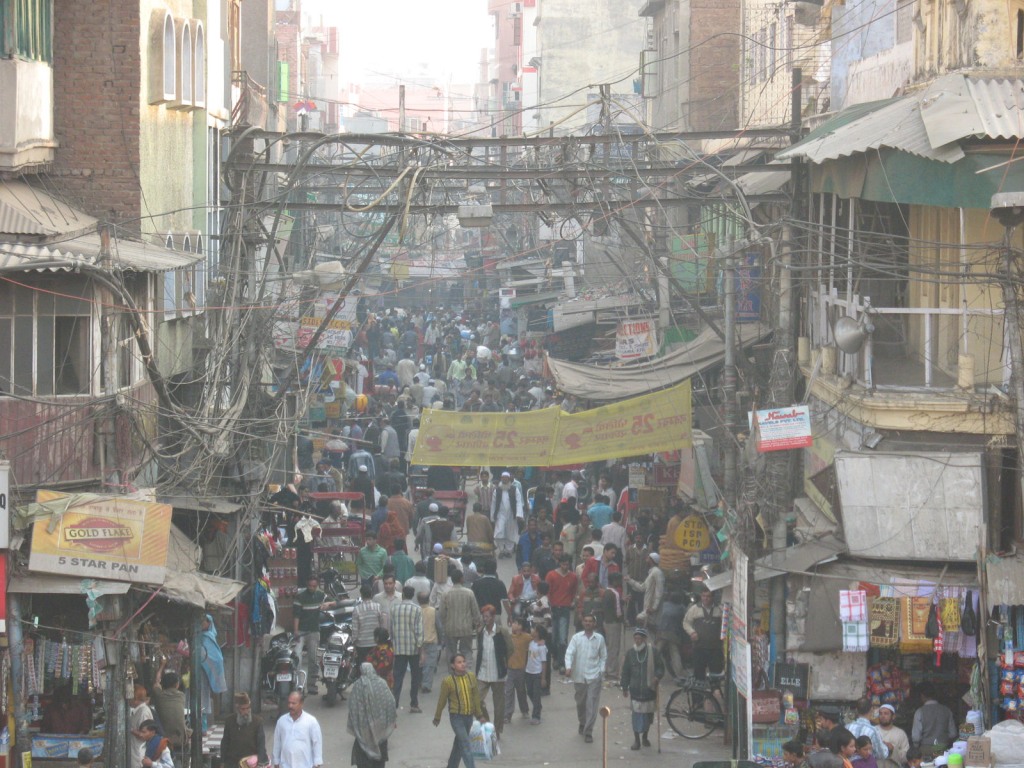
Directly opposite Jama Masjid is the famed Chandni Chowk marketplace. Its chaotic thoroughfare forms an axis through Old Delhi towards New Delhi Railway station, and has been similarly raucous since the 17th century.
Looking back towards Jama Masjid from the opposite direction, through the evening haze and sea of humanity.
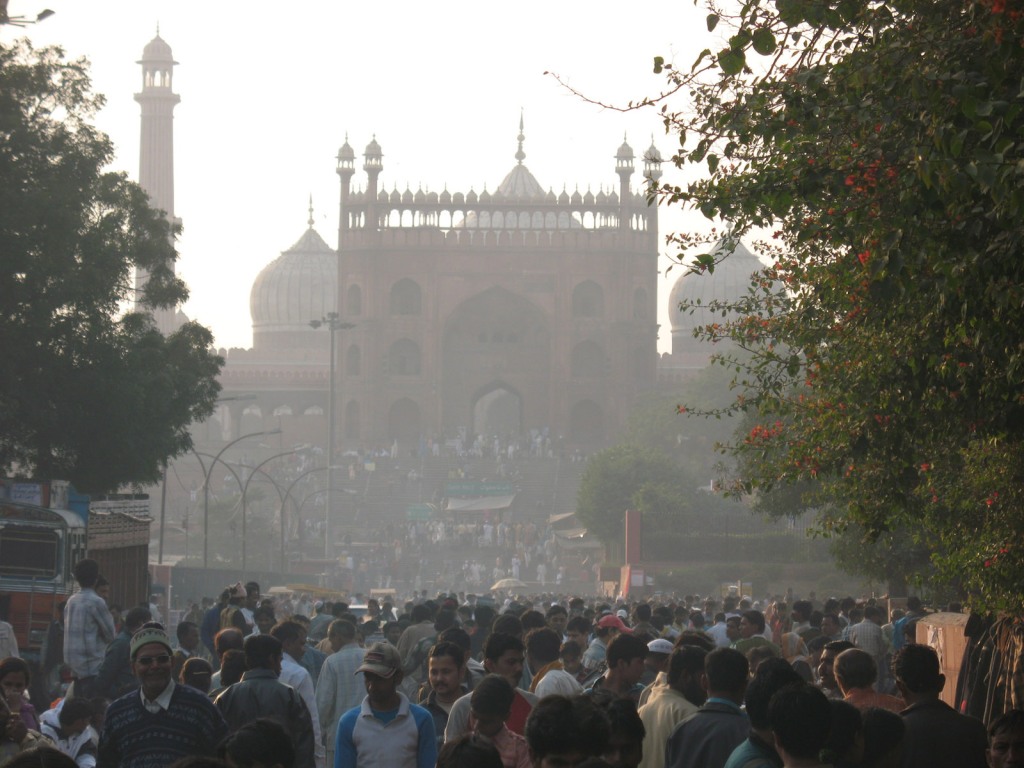
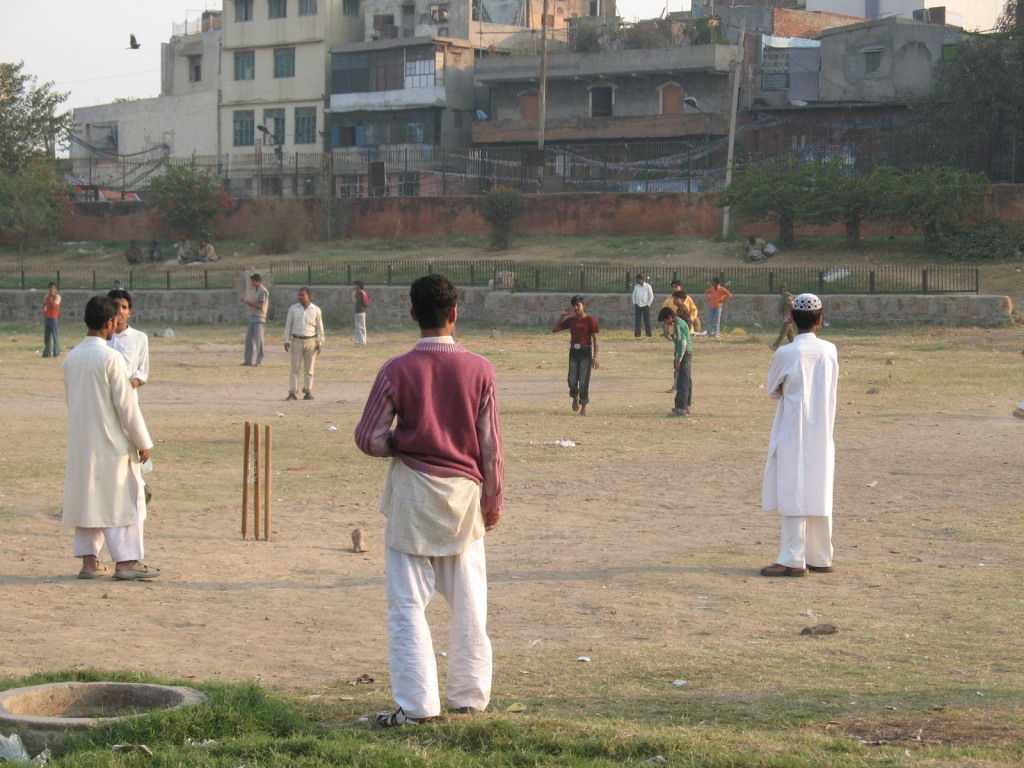
Evening is the best time for cricket, as the heat of the day fades and the sun goes down. These players were by Meena Bazaar as we left Jama Masjid, although to be fair as it was December, it hadn’t been especially hot during the day anyway.
The Red Fort is perhaps the most significant historical landmark in Delhi, occupying a prominent site on the edge of the Yamuna River. While much of the interior was destroyed by the British, the walls remain in good condition, their colour lending the fort its name. This is the Lahori Gate which faces Old Delhi to the west.
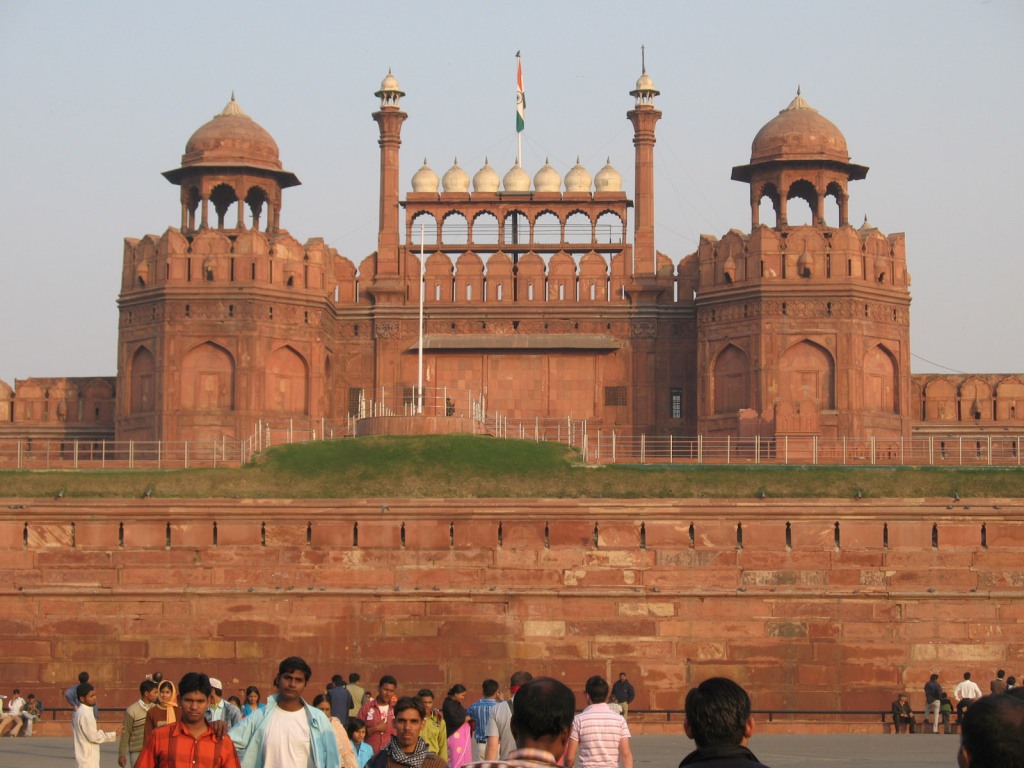
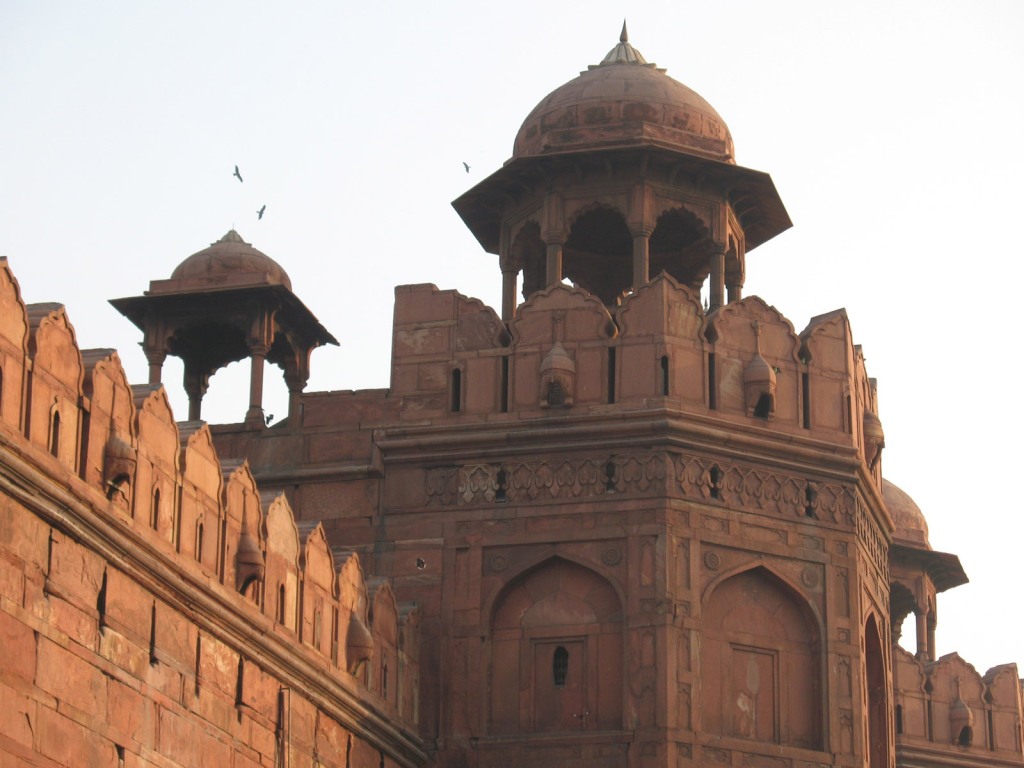
The Mughal architectural style of the red walls of the Red Fort, similar in colour to Fatehpur Sikri near Agra. The fort dates back to 1639, when Shah Jahan decided to relocate the capital from Agra.
Right opposite the Red Fort is the most significant Jain temple in Delhi, Sri Digambar Jain Lal Mandir. It dates from 1656, the same period as the Red Fort, and is well known for the Jain Birds Hospital within.
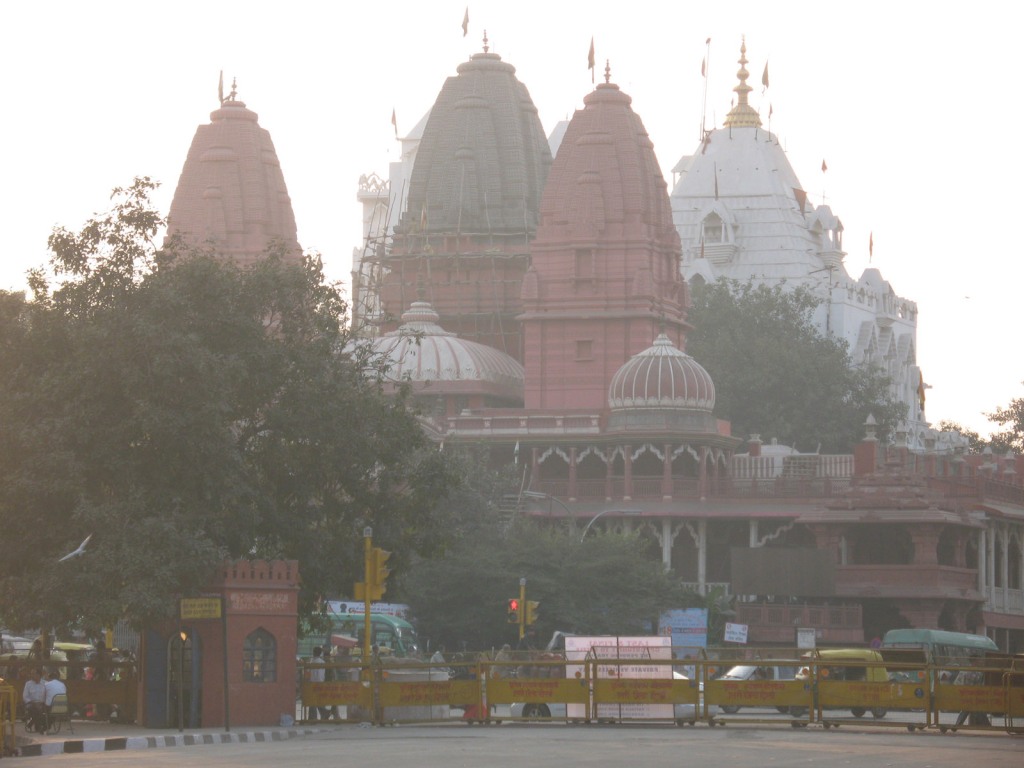
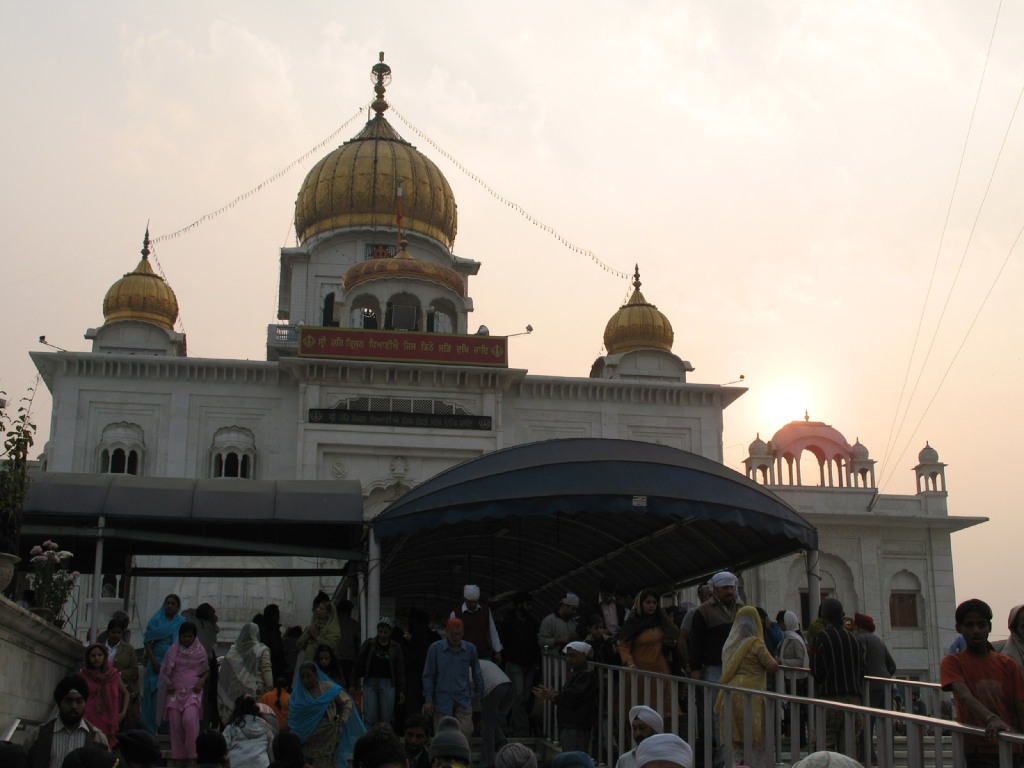
As our tuk-tuk driver was Sikh, he kindly offered to take us to Gurdwara Bangla Sahib, the most important Sikh temple in Delhi. As far as I could tell, we were the only foreigners present, but we were received in the same manner as everyone else.
A golden shrine within the temple. Although crowded, it was quite peaceful with people slowly shuffling around. I especially like the royal blue colour of these guys’ turbans.
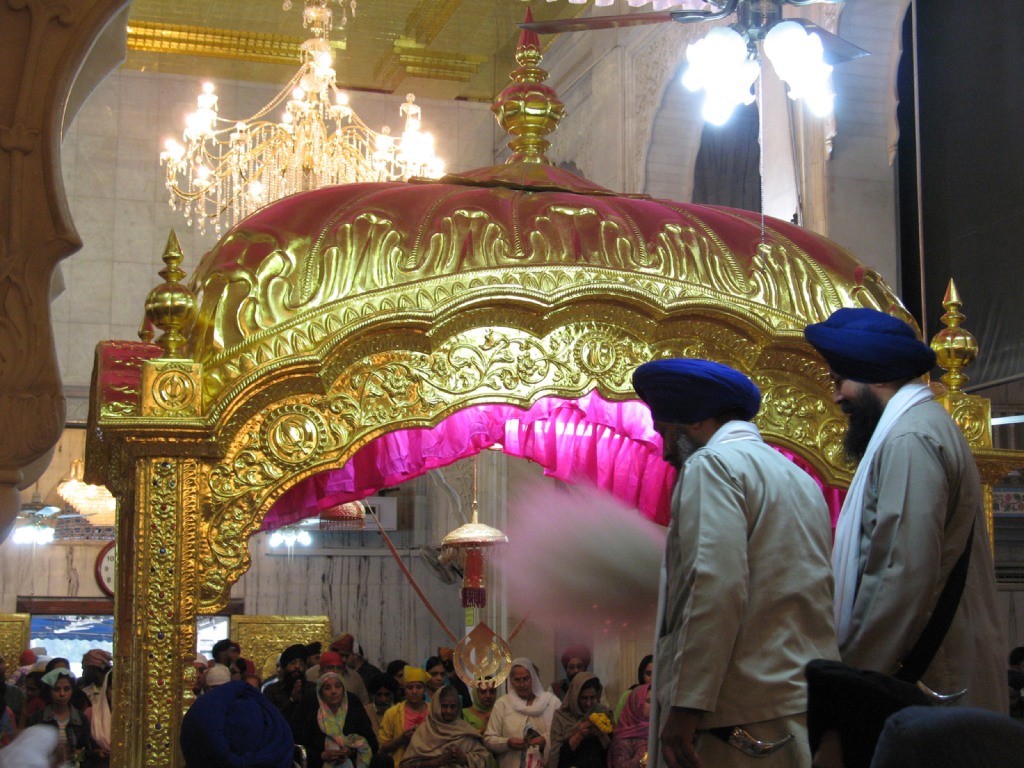
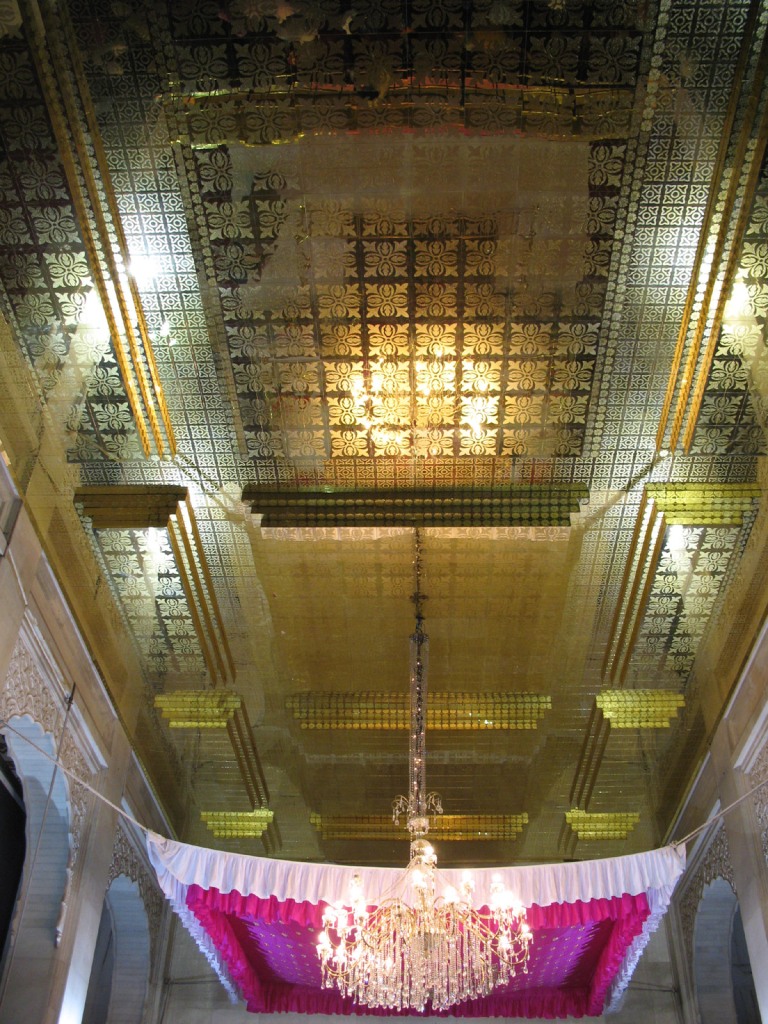
The golden ceiling inside the Gurdwara, reflecting some of the faithful below.
The outdoor part of the temple is dominated by the Sarovar, a large pool of holy water. Nearby, people were filing past a priest, so we did the same and found that everyone was being handed a small amount of hot nut paste, no charge. This is in line with the Sikh practice of langar, providing food for all people regardless of religion or race. It tasted pretty good.
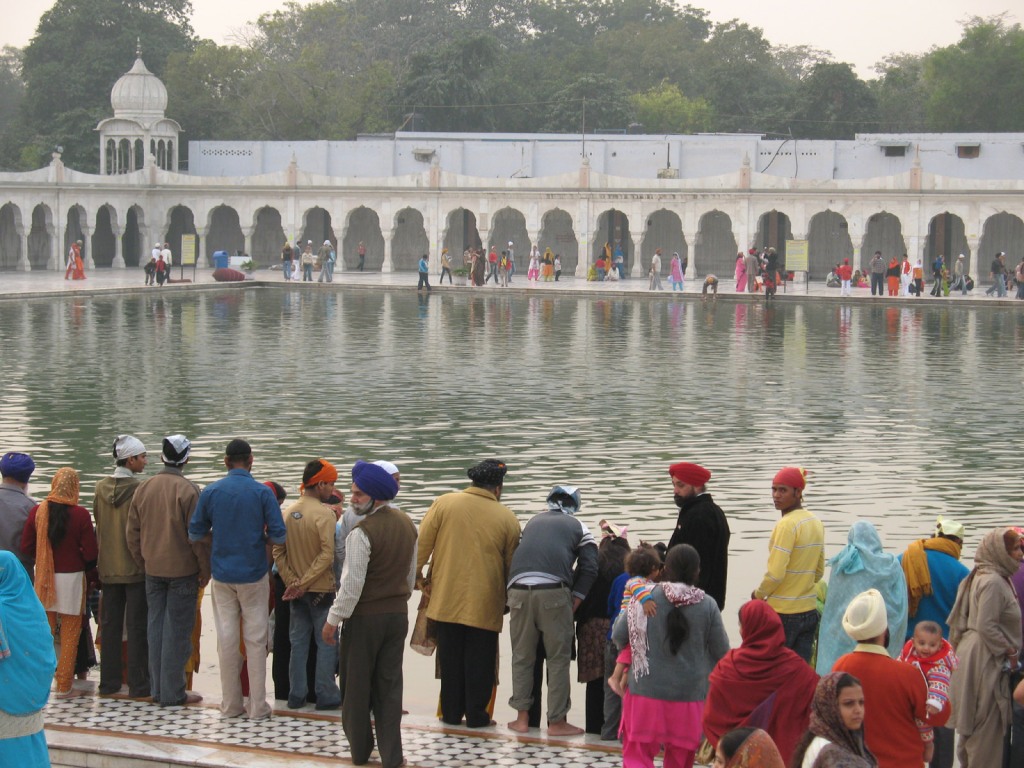

Perhaps India’s most famous son, Gandhi leads the Salt March of 1930, one of many acts of nonviolent protest which ultimately led to the bloodless defeat of the British occupation in 1947.
Created 2008 | Updated 2023
